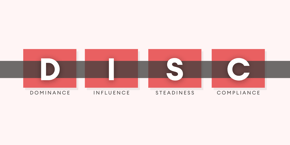I previously wrote a blog all about firmographics: what they are and what they mean to business. But the one area I didn’t really touch upon was how to use firmographics.
For those of you that haven’t read my initial firmographics article and you have no idea what I’m talking about, they are pretty much the business equivalent of what we all know as demographics. So rather than asking questions that determine age, interests, household income, and so on, firmographics questions center around the number of employees, revenue, industry, number of locations, and the like.
I had them down as the future of B2B sales and marketing, and certainly, my opinion hasn’t changed. But knowing what firmographics are and using them to your advantage are two very different things.
Askings firmographics questions to profile your customers can provide clarity that not many businesses have, as simple as they may sound. From a marketing point of view, firmographics are like gold dust. With the knowledge of exactly who your customers are, marketers can define key segments and create campaigns that will pack a punch with a specific group.
Your company can easily prioritize opportunities with the most potential by using firmographics. Are you really going to devote as much time to an opportunity worth a few thousand pounds or dollars as you would to one worth tens or hundreds of thousands? And over time, you will also start to learn the basic profiles of those prospects most likely to spend money with you.
There are plenty of ways that profiling your customers with firmographics can be a knight in shining armor when it comes to growing your sales.
Target your audience effectively.
Firmographics are brilliant when it comes to targeting your audience. You’ll no longer have to rely on gut feelings or call prospects on a whim in the hope of making a sale. Say you want to call on or market to your top 20 spending customers in the office products industry, in the Chicago region, with Staples as your main competition and over 30 employees. Good use of firmographics will have this information for you in no time – with no hassle of trawling through spreadsheets, invoices, and researching prospective companies.
If you are segmenting your target audience using firmographics, you’ll be able to identify common pain points, concerns, needs, and objectives across similar prospective companies, making those all-important first calls that much more effective.
Know the makeup of your existing customer base.
It’s surprising (and slightly worrying) how many people don’t know who their main customers are off the top of their heads. I don’t mean specific customers, but just knowing things as simple as their location, turnover, industry, company size, and number of employees.
Knowing exactly who your ideal customer is will help no end in your sales efforts. If you know that an average customer has around 20 employees and turns over $5 million across 4 branches – you can effectively target companies of a similar ilk. It will save a lot of wasted profiling calls and big red crosses on a spreadsheet.
What’s more, when integrated with business intelligence tools, you can also use firmographics to predict the typical buying patterns of a certain type of customer. If you know that similar customers (in terms of their firmographics) to ‘Prospect A’ buy a particular brand or complementary item, why not offer similar products or promotions on this product? This is the route Amazon has taken with that: “people that bought this item also looked at…” option in a B2C environment.
Keep things consistent
Firmographics themselves don’t require a high-tech piece of software to keep track of; simply a little time and patience to ask the right firmographics questions in the first place. While the software will make your life a little easier, most salespeople can keep track of firmographics using a basic spreadsheet.
However, the software of today will make things a little more uniform when it comes to gathering firmographic information. Any good CRM will have soft labels enabling the addition of fields to any customer record so managers can ensure that things like customer location, size, revenue, and so on are all recorded.
With all this in mind, you need to be making use of firmographics in order to increase your bottom line. Small insights can make big waves in your pool of opportunities. You never know; it could be one of the most valuable processes you ever implement.



